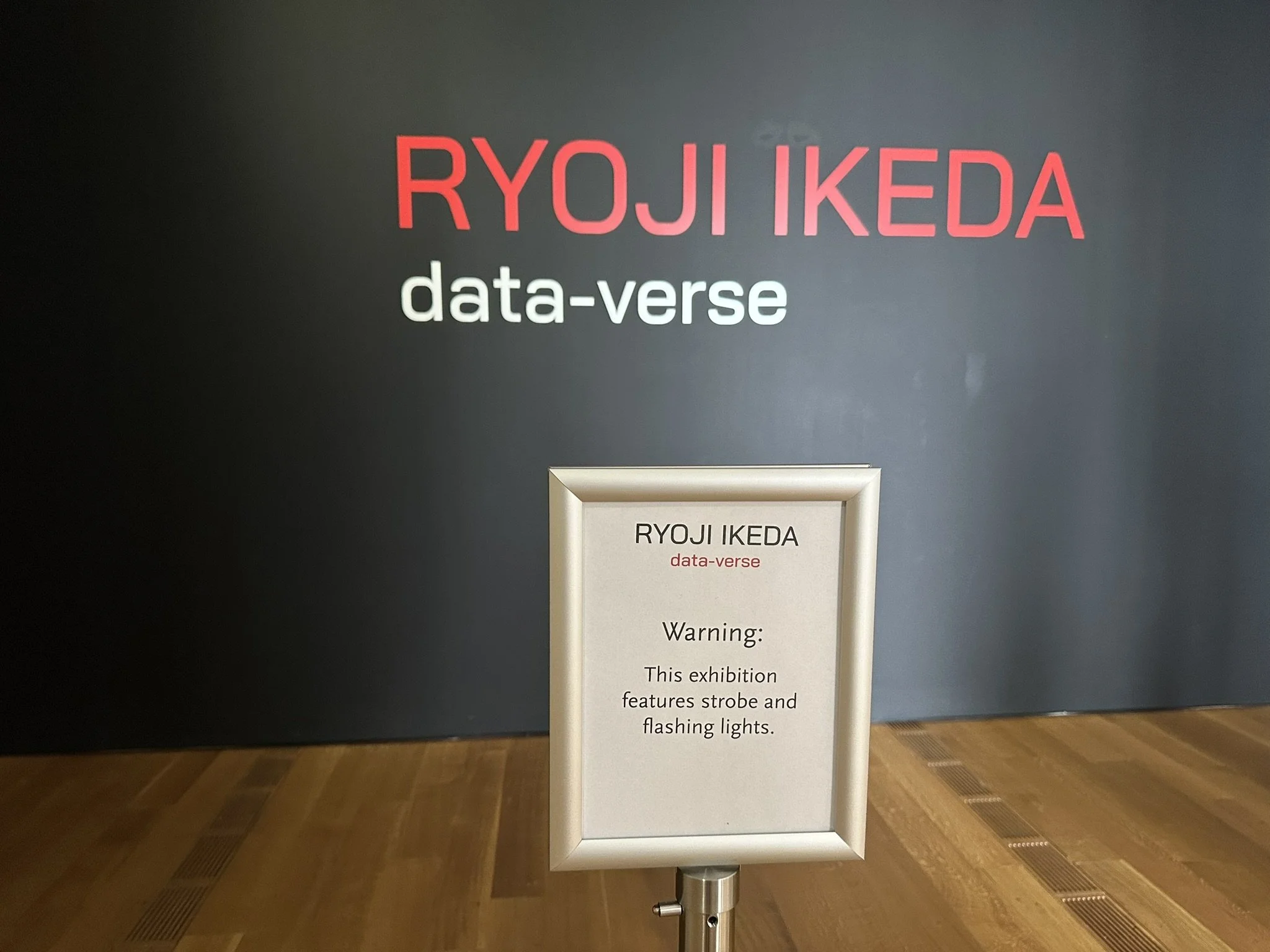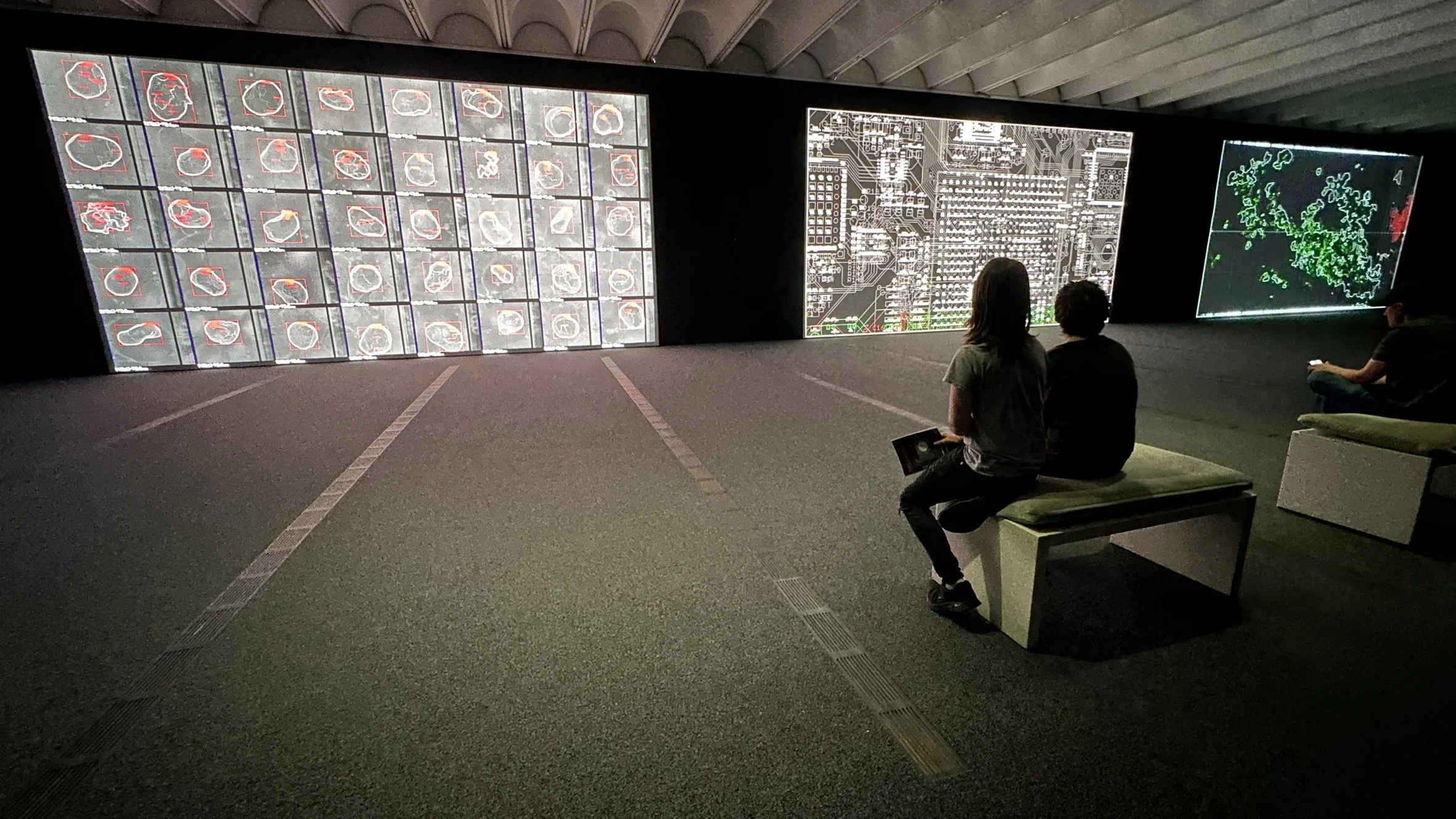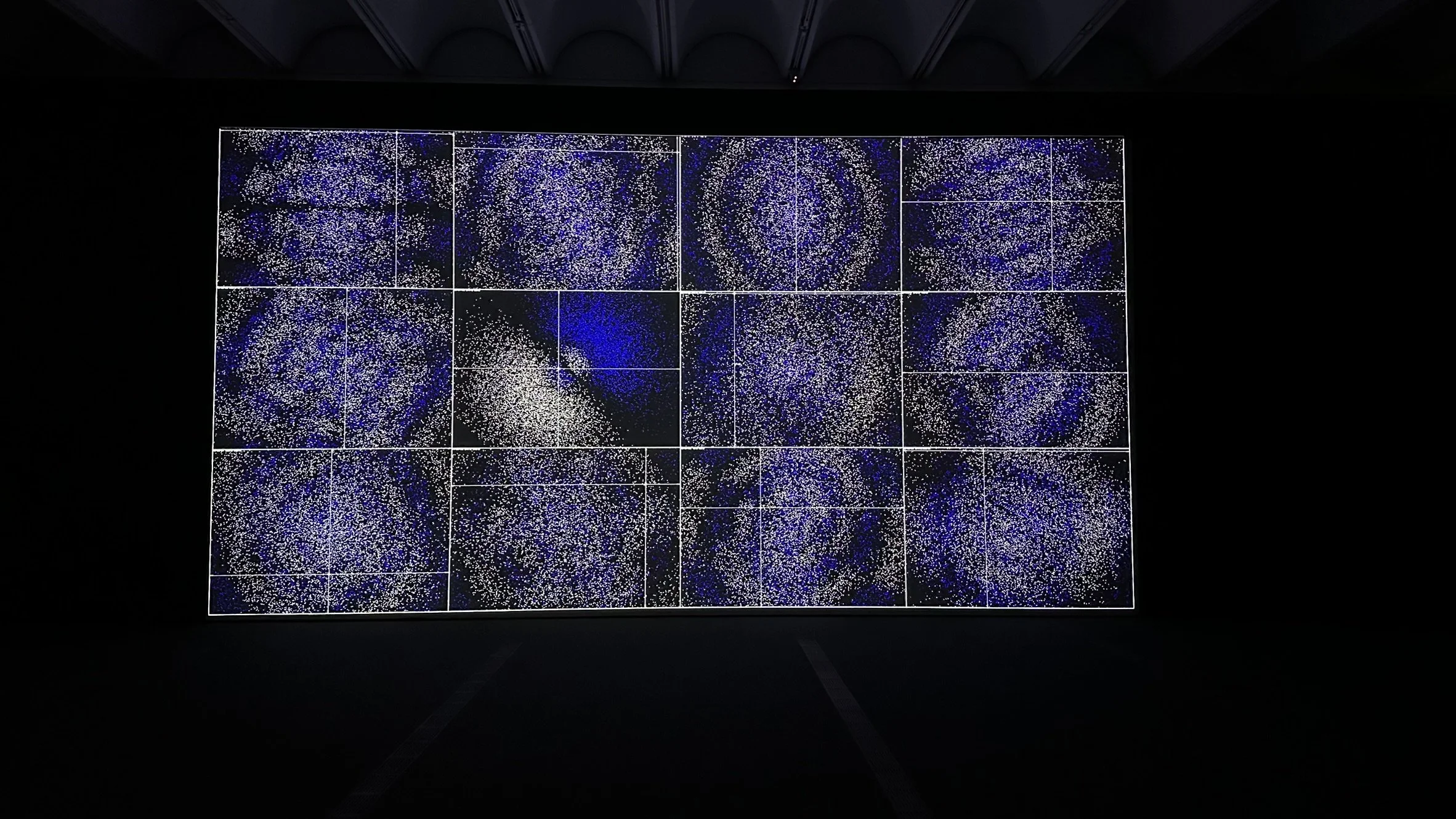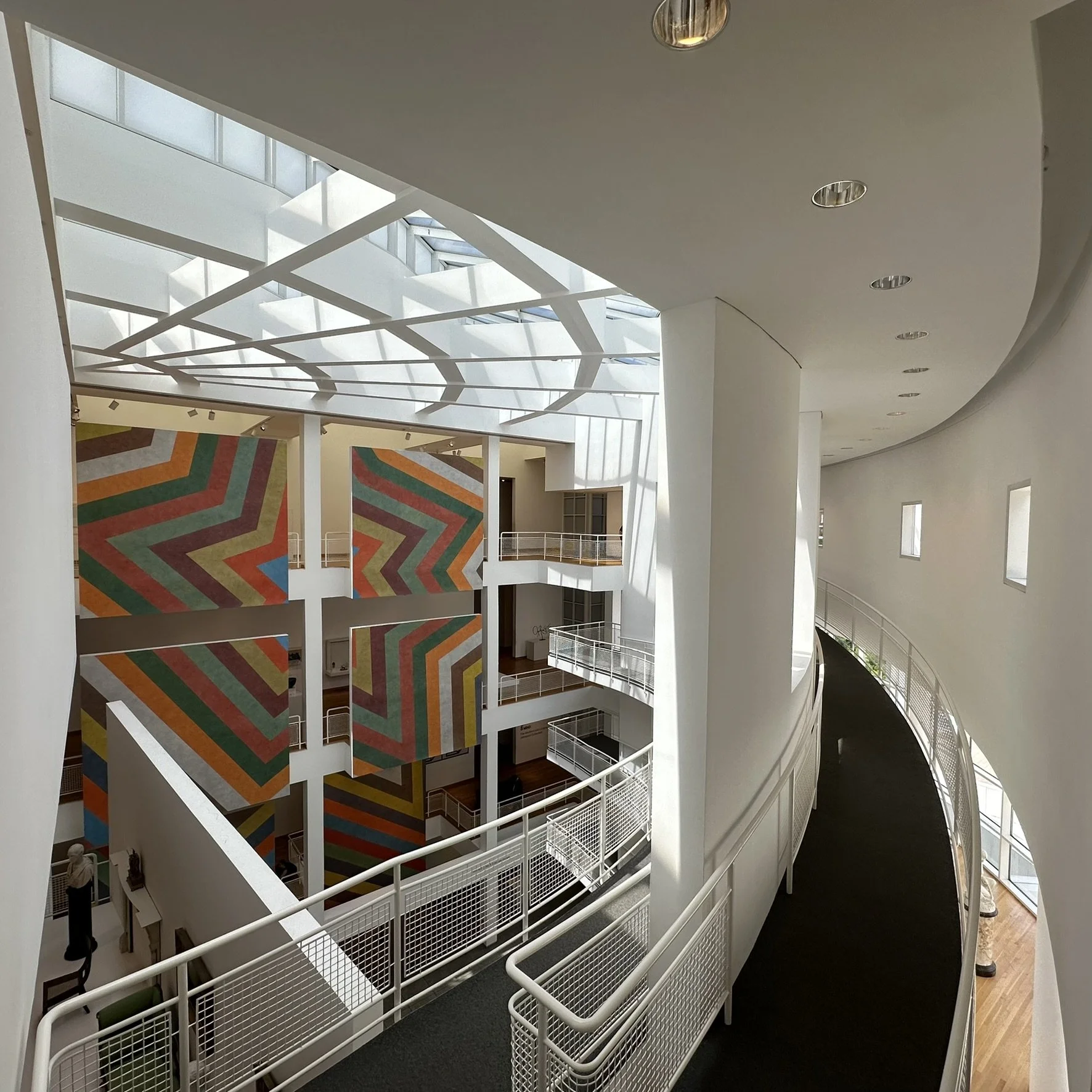data-verse by Ryoji Ikeda
The High Museum of Art in Atlanta, Georgia is featuring an exhibition by Japanese electronic composer and visual artist Ryoji Ikeda called data-verse. The works in the exhibition “offer a multisensory journey that refreshes and renews how we perceive and understand the vastness of the universe”… which Ikeda “prefers to be experienced rather than analyzed”.
Ryoji Ikeda was born in Gifu, Japan in 1966. He lives/works in Kyoto and Paris, France. He’s produced a significant number of albums and exhibitions. The combination of subject and scale in data-verse may be of interest to you.
The first thing to note is the exhibition features strobe and flashing lights. That’s putting it mildly. This is the only exhibition during which we’ve seen security staff wearing hearing protection.
The exhibition spans multiple rooms with some works taking the entire space. The footprint is approximately that of the lobby in which you purchase tickets. It was refreshing to see the High able to accommodate such large works.
In the image above, people watch videos on three separate screens. This work is titled, “data-verse 1/2/3”. The videos depict data and are paired with music… Ikeda’s vision for experiencing data rather than analyzing it.
Taking time to watch the presentation gives you a sense of the data collected and how it’s part of a larger set. Ikeda includes visualization of clouds of data - data points arrayed in three dimensions. He also includes data sets for a human scale such as the progression of images resulting from medical imaging.
If you’re patient with the presentation (you sit through the entire loop), you get a sense of the data in motion. It can leave you thinking about how we collect and access data. Are we capable of making sense of the information or are we missing opportunities?
The amount of data Ikeda presents, even when viewed at an enormous scale or in abstract forms, is remarkable. The presentations seen above and below are at least 60 frames per second.
Ikeda has produced three separate presentations for this one work in the exhibition. data-verse 1/2/3 is many tens of thousands of frames of work set to its own sound composition that’s perfectly synchronized.
The image above is essentially twelve presentations in one (requiring even more work and synchronization to music) and it’s just a third of this work. The video below gives you a thirty second sense of the sound that punctuates the graphic presentation.
THE VIDEO BELOW CONTAINS SOME OF THE FLASHING LIGHT EFFECTS MENTIONED EARLIER. THE VIDEO INCLUDES SOUND SO PLEASE LOWER THE VOLUME BEFORE PROCEEDING.
Sadly, the video above doesn’t convey the impact of data-verse 1/2/3. You have to see it for yourself to appreciate the changing scales Ikeda presents: from clouds of data that could be galaxies to the human body to minutiae. The exhibit guide explains Ikeda’s interest in exploring the relationship between microscopic and macroscopic depths of the universe.
There are other works in the exhibition - seven in total. The scale of those works varies from an entire room featuring a video presentation projected onto the floor to smaller pieces mounted on the wall of a gallery space.
The guide to the exhibition is brief yet helpful. It includes some prompts to get the visitor thinking:
How do we visualize time and space?
How do we think art and technology intersect?
What are some of the dualities that the exhibition helps us consider? (Some examples are given.)
We identified with the work because it got us thinking about the evolution of our practice. Architects can now scan buildings with cameras and entire sites with drones to develop clouds of data points. Ikeda’s exhibition helped us think about data at various scales and the relationships that could exist - or be discovered.
Members of the High Museum can park for free and enjoy a faster queue for free admission (included with membership). We think you can easily enjoy the Ikeda exhibition in under an hour - including parking and a spin through the gift shop. We added this stop between obligations and are glad we did so - we’ve never experienced an exhibition at this scale on this topic…. until now.
If you visit the High Museum, don’t forget to check out the buildings. The original building by Richard Meier at the front of the property remains a key piece of Atlanta architecture and one of the reasons Meier was later commissioned to design the Getty Center in Los Angeles.
Renzo Piano designed the addition that houses the Ikeda exhibition and worked with Atlanta firm Lord, Aeck & Sargent, Inc. and many talented consultants to complete the project.
Leave a comment below to let us know if you go to see data-verse. What did you think about the exhibition?
data-verse by Ryoji Ikeda at the High Museum closes on August 10, 2025.
Other Posts of Interest:
Architecture of the Last Colony Book Launch
Gift Idea: American Classicist
Celebrating the Work of Julia Morgan
COMMENTS: We’ve enabled comments for this post to encourage discussion and learn from you. Please review and adhere to the blog comment policy in our Terms of Service if you want your comment to be posted. Requirements include no anonymous posts (first name and last initial is fine). Please include your email address - your email address will not be displayed or added to our email list. All comments are moderated - they will not appear immediately.



